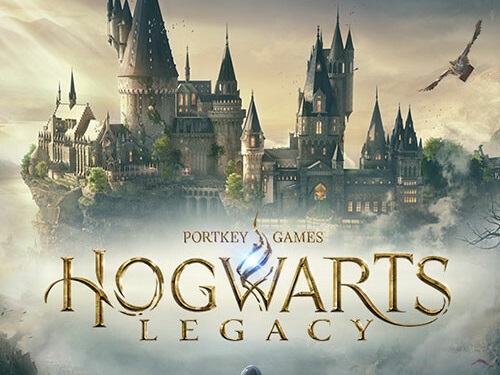Against all preemptive scepticism, the developers of Hogwarts Legacy have managed to bring the famous and much-loved magical world to our screens - high quality in both gameplay and technical form. Even if you are not a fan of the Harry Potter universe, the graphics of the game are sure to impress like no other. Alongside the textures, the lighting and effects (such as magic spells) are also astounding.
In outside areas of the game, the draw distance is great and the vegetation density is impressive. However, the absolute highlight of Hogwarts Legacy remains its keen eye for detail - or in other words - its obsession with detail, which shows the enormous effort it took to develop the game and provides a first-class experience for the player. Content-wise, the game can't be critiqued much either.
The combat system, for example, is very fluid and intuitive. The contrast of the occasional puzzle fits in nicely and provides good variety to the game. Additionally, the school day is accompanied by atmospheric background music and good voice acting.
The introduction (although a bit long) succeeds in captivating even casual gamers and gently introduces the player to the numerous mechanics and features of the game. Because our benchmarks were carried out around two weeks after the game was released, most of the bigger technical issues which were reported during the launch had already been resolved. This meant that during our test, the game didn't crash a single time or show any other inconsistencies.
PC users get to benefit from a comprehensive options menu. Beginning with the display tab, where players can set the resolution (although sadly there is no traditional full-screen mode), edge smoothing, VSync and frame rate limit. Depending on the graphics card, this menu also includes FSR and DLSS.
The graphics tab shows a similar number of options. Included here are four presets, which influence the ten individual settings below. If needed, the supported ray tracing (reflections, shadows and ambient occlusion) has to be activated manually.
A bonus: With the exception of ray tracing, all changes are implemented automatically and without having to restart your device. The short explanations given for each of the options also prove to be a nice detail. Annoyingly, shaders (which you might know from other games such as Call of Duty or Uncharted ) are loaded every time the game is booted up.
On some devices, this can take a few minutes to reach completion. Because the option to "run benchmark" in the menu only consists of a short background hardware analysis, we will rely on a set sequence to test the performance. After the lengthy tutorial, the player is allowed to leave the area and explore the outside world.
The main quest for the main character is to set out for Hogsmeade with their companion by their side. With the help of the tool CapFrameX, we record a sprint through the garden until the paled gate, for roughly 25 seconds (see video). If the computer only has an iGPU to work with, the player will have to get used to experiencing low resolutions and details - if the game even runs at all.
Even the Radeon 680M , which is very powerful as far as integrated graphics adapters go, doesn't manage to run the game at over 40 FPS in Full HD (1,280 x 720 pixels are, however, quite playable on the low preset). To run the game at mid to maximum settings, at least a mid-range graphics card is required, similar in specs to the Radeon RX 6600M . If you want to play Hogwarts Legacy in QHD at 2,560 x 1,440 pixels and using the Ultra preset, you cannot avoid having to use a laptop or a PC with mid to high specs, such as the GeForce RTX 3060 or the Radeon RX 6800M .
Almost all notebook graphics cards struggle to run the game at the highest settings in 4K. Even the top-of-the-range model of Nvidia's latest generation, the GeForce RTX 3080 Ti , fails at the 40 FPS mark. The game becomes even harder to run when ray tracing is activated.
While a GeForce RTX 3080 is sufficient for Full HD, even top-of-the-range PCs reach their limits at 4K (see Radeon RX 7900 XTX ). Since gaming tests are very time-consuming and often restricted by installation or activation limits, we can only provide you with a part of the benchmarks at the time of publishing this article. More graphics cards will be added to our tables in the coming days and weeks.
.

